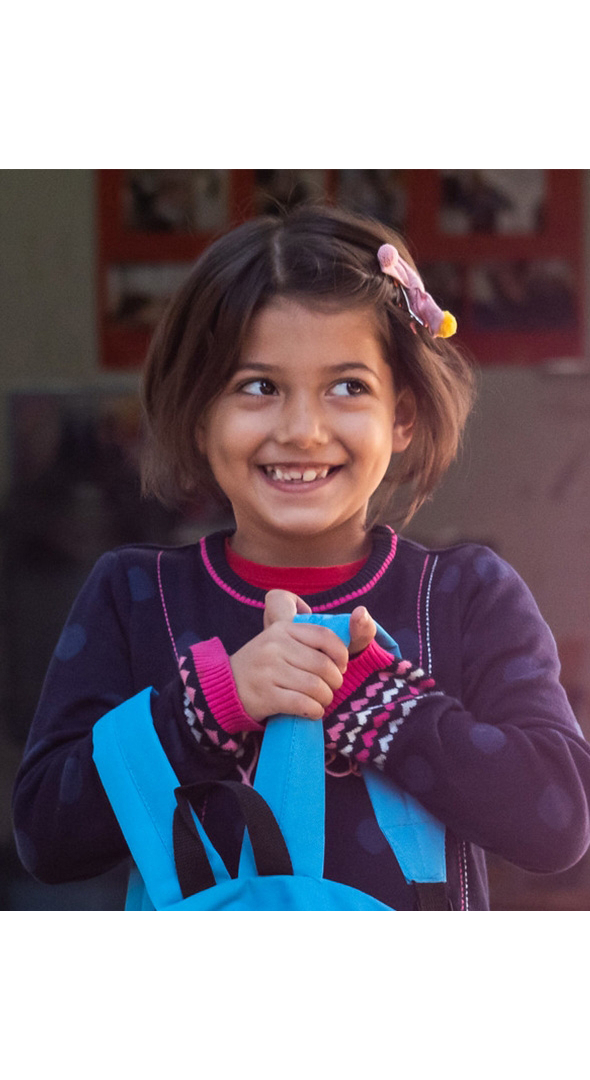In Cuba, getting children back into classrooms after Hurricane Matthew
2017-04-20
© UNICEF Cuba/2017
Students of Abel Santa Maria Primary School, in San Antonio del Sur district, using educational materials from a kit donated by UNICEF.
by Marta López Fesser
Hurricane Matthew was the strongest recorded storm ever to hit the province of Guantanamo, Cuba. When a weather event of this scale unleashes its full force, protecting the life of each child is a huge challenge that requires meticulous preparation.
In the case of Cuba, careful disaster planning paid off. There was no loss of human life and material damage was kept to a minimum, allowing the affected communities to focus on recovery and to coordinate a rapid return to the classroom for all school students.
GUANTANAMO, Cuba/ HONG KONG, 20 April 2017 – Cuba is under the permanent threat of natural disasters such as hurricanes, earthquakes and drought, and is highly vulnerable to the effects of climate change. The country’s policies prioritize disaster risk reduction and environmental education, with particular emphasis on creating a culture of prevention among its youngest citizens.
Their first experience of finding themselves in the path of a hurricane was very different for the children of Guantanamo Province, but they all agree on the main lesson: prevention is better than cure.
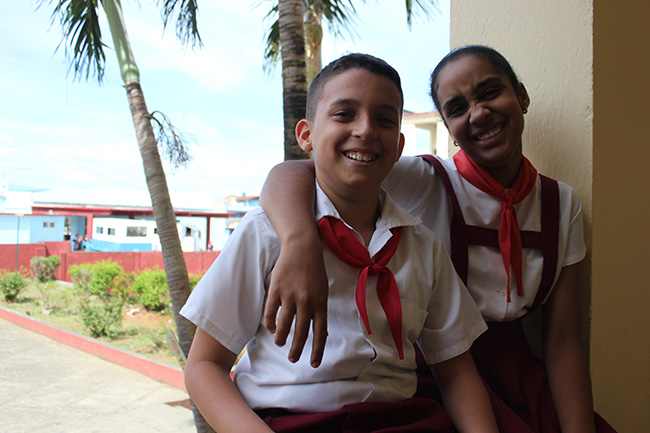
© UNICEF Cuba/2017
Brenda and Enmanuel think that living through a hurricane is different from just hearing about it. Their parents had told them about Hurricane Ike, which hit Baracoa in 2008, but they were too young to remember it.
“I think we weren’t so afraid because we already knew what was coming. We’d been following it on TV and radio during the information stage, and when it arrived we were ready, we knew we were safe,” says Enmanuel, 11, a student at Routney Coutin Primary School in the city of Baracoa.
“My parents sent me to my grandpa’s house to look after him because he’s old and lives alone, while they stayed at home with my little sister. Whenever water started coming in because of the wind and the rain, we got out the mop; a hurricane is really powerful and noisy, it’s very big. Of course we were afraid: afraid of losing our loved ones or our friends,” Enmanuel admits. “We were scared something would happen...”
Enmanuel’s classmate Brenda, 11, and her family were given shelter at the school because their home did not meet the requirements to withstand a hurricane. The school had been designated as an evacuation centre by the civil defence organization.
“I was with my family, and we took our most valuable possessions with us. I had my mobile phone and my tablet in my backpack because they would be really difficult to replace,” she says. “The head teacher of the school told us there were more than 2,000 people in the school in the morning when Matthew was due to make landfall… It was really bad, it was just destroying everything, it was devastating.”
Recovering homes and schools
During the night and early morning of 4 to 5 October, around 150,000 people lost their personal possessions as the hurricane damaged more than 42,000 homes across Guantanamo Province. Nearly 90 per cent of the houses in Baracoa were affected.
Hurricane Matthew also affected more than 290 educational centres in Guantanamo Province, with 96 per cent of schools and nurseries in Baracoa district sustaining damage.
One of the top priorities for the Cuban Government was to get children back in school. Following the disaster risk reduction plan, family centres and institutions were used as alternative learning spaces, and classes resumed in 6 out of the 10 affected districts just one week after the hurricane.
In the four worst-affected districts, Baracoa, Maisí, Imias and San Antonio del Sur, classes started within two weeks, as temporary spaces were gradually adapted and schools and nurseries were repaired.
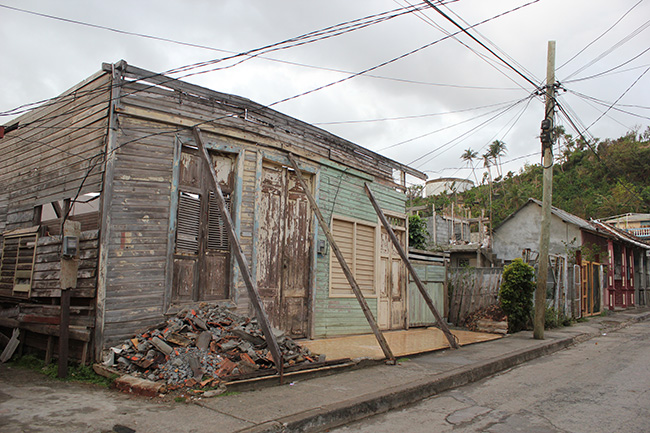
© UNICEF Cuba/2017
House damaged by Hurricane Matthew in the city of Baracoa. Around 150,000 people lost their personal possessions as the hurricane damaged more than 42,000 homes across Guantanamo Province.
This was the case for Brenda and Enmanuel, who went back to school after a fortnight, despite the fact that their school continued to be used as an evacuation centre for another month. The curriculum and timetable were adjusted to ensure the delivery of core content, and arrangements were made with other schools to find space for classrooms and students. The rapid return to lessons was made possible by the community’s participation in the task of cleaning, repairing and rebuilding learning centres, and other districts and provinces also donated vital resources.
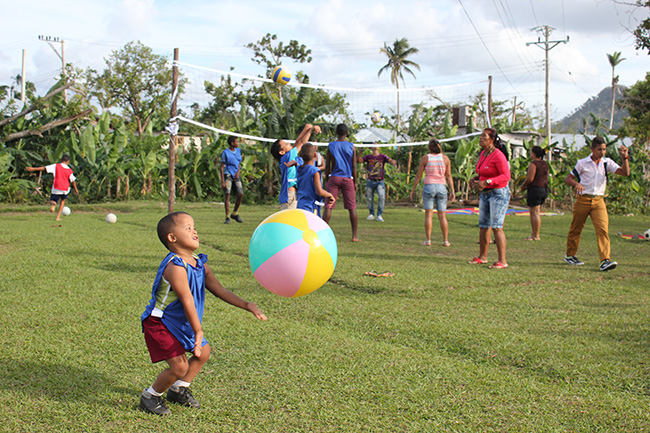
© UNICEF Cuba/2017
Children at Perucho Figueroa Cisnero Special School for children with mental disabilities in Baracoa playing with the recreation kits.
Many children like Brenda needed early psychosocial recovery and new learning materials. UNICEF supported the Ministry of Education’s recovery efforts by donating cases with school kits, primary education kits and recreation kits, all of which have helped children continue to learn. UNICEF also promoted post-emergency psychosocial recovery through play and sports activities. Children and teachers were particularly grateful for the recreation kits, because they helped to keep students entertained while teachers attended to other groups in shared classrooms.
Approximately 6,500 girls and 8,000 boys from the municipalities of Maisi, Imias, San Antonio del Sur, Baracoa and Yateras have benefitted from the schools in a box and the recreation kits donated by UNICEF. 153 educational centres and 83 communities have received the early childhood development kits, providing early education for more than 12,700 boys and girls
“The worst thing was losing our homes, our belongings, but at least we have all survived,” says Brenda. “Hurricane Matthew taught us to keep our things safe; lots of kids lost their books,” Brenda says.
“My family and I didn’t have enough time to save most of our things; we’ll do better next time,” adds one of her friends.
By late Feuary 2017, only 11 schools were still awaiting repairs. The ones that had been repaired were in better condition than they were before the hurricane. Stronger construction materials were used, and the new design made the reconstructed centres better suited for their purpose in the future.
However, by the end of 2016, 11 schools in Baracoa and Maisi were still in use as evacuation centres, housing children who lost their homes and allowing them to attend school every day. UNICEF continues to identify and support needs on the ground, in partnership with the Ministry of Education, and will support the reconstruction of 10 schools and the rebuilding of water storage facilities in the communities affected.
The residents of Baracoa know that although hurricanes don’t happen every year, high tides, erratic rainfall and drought are here to stay as a result of climate change. This means it is more important than ever to support the resilience of communities.
In partnership with the Ministry of Education, UNICEF has been working for the last three years with the communities in Cuba’s central and eastern provinces that are particularly vulnerable to catastrophes. More than 14,000 children and adolescents at 128 schools have taken part in a project to build their capacity to cope with disaster.
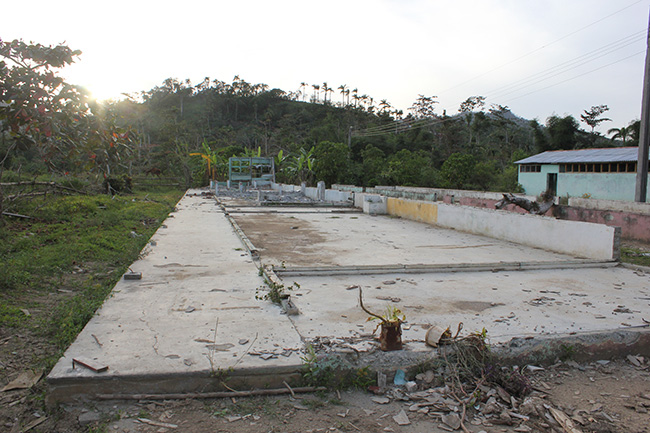
© UNICEF Cuba/2017
Combate de Sabanilla High School, which was severely damaged, hopes to reopen its doors to students in May. Hurricane Matthew affected more than 290 educational centres in Guantanamo Province, with 96 per cent of schools and nurseries in Baracoa district sustaining damage.








